A quick look at some of the main places to see during a visit to the medieval city of Nuremberg in the Franconia region of Bavaria, with a short description of the sight and location. Some sights, such as the Albrecht Dürer house and the Nazi Party Rally Grounds are covered with more detail on our main Nuremberg page.
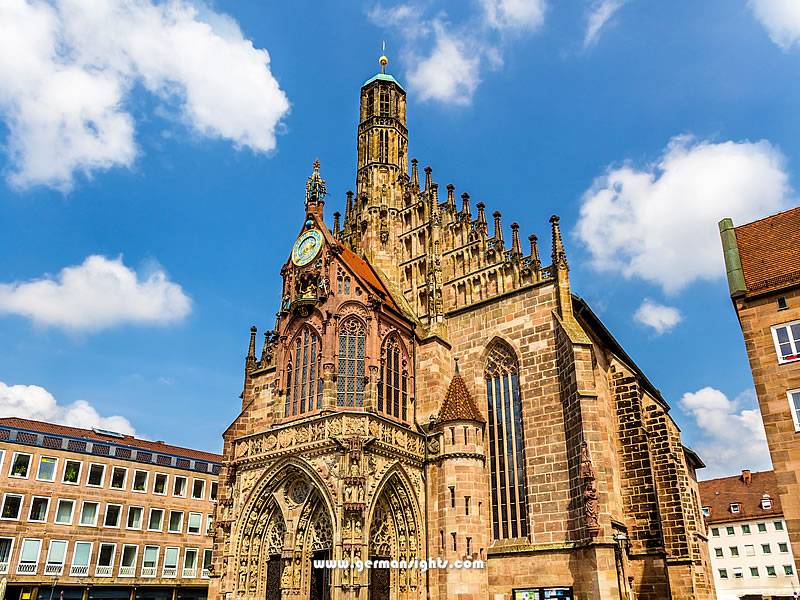
The Frauenkirche ('Church of Our Lady') is a Catholic church located on the main square of Nuremberg old town. The famous Nuremberg Christmas Market takes place in front of the church and the 'Christkind' opens the market from the entrance. A clock on the church facade has figures which move in a display at midday. It was originally built in the 14th century, although in common with many other sights in Nuremberg, it was substantially restored following damage in the Second World War.
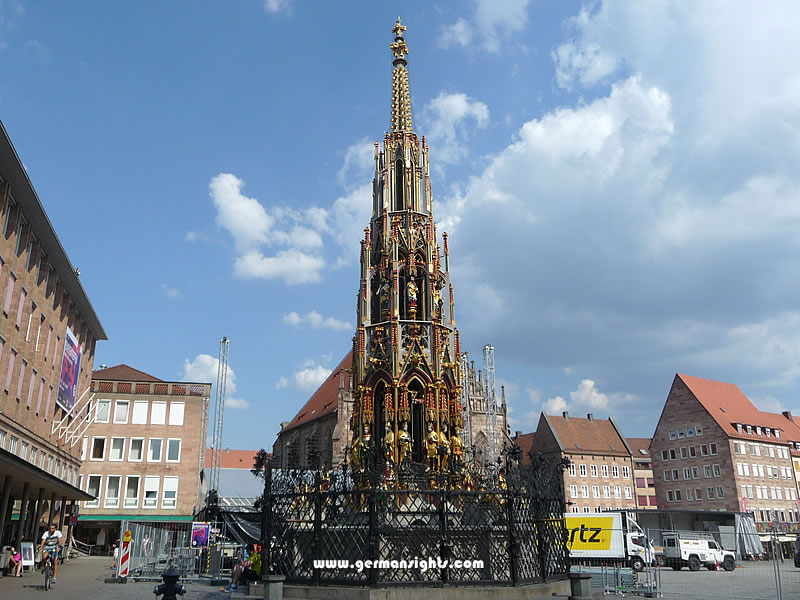
The Schöner Brunnen ('Beautiful Fountain') also stands on the main square near the town hall and one of the city tourist offices. It too dates from the 14th century and survived the Second World War undamaged. Two brass rings in the fencing surrounding the fountain are popular with tourists because of the legends surrounding them - either bringing fertility or good luck, depending on which you believe.
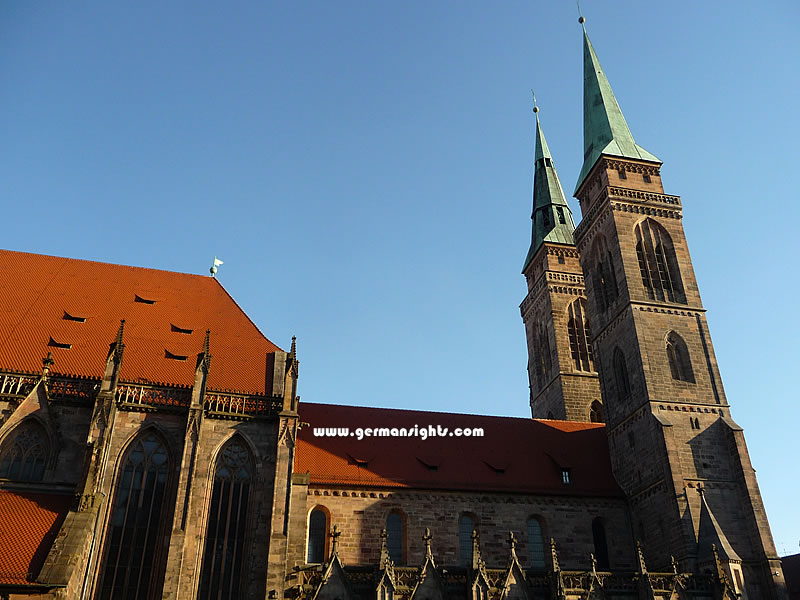
St Sebald is one of the patron saints of Nuremberg and the church dedicated to him in the Sebald area of the centre of the city houses his tomb. Construction started on the Church of St Sebald, which was a place of pilgrimage in the Middle Ages, in the 13th century (although the original church was dedicated to St Peter). Along with the Lorenzkirche, the church is one of the major Protestant churches in Franconia. It was badly damaged in the Second World War and reconstruction finished in the early 1950s.
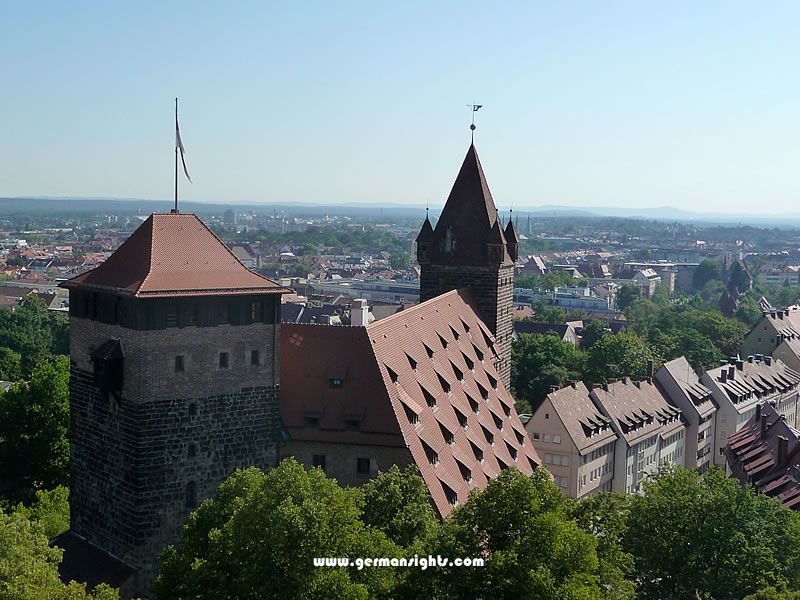
The medieval castle complex above Nuremberg, known as the Kaiserburg, is a fascinating historical reminder of the city's glories. It actually consists of three different elements of fortification: the old Imperial castle; the Burgrave's castle (the rulers of Nuremberg in the Middle Ages); and the city wall fortifications. The castle grounds are free to visit and the gardens in the old exterior fortifications are well worth a wander. (There is also access to a short section of the old city wall in the area above the Albrecht Dürer house.) The Deep Well and the Sinwell Tower, with its spectacular views over the city, can be visited as part of a shorter tour and there is also the option of longer tours of the castle interior and exhibitions.
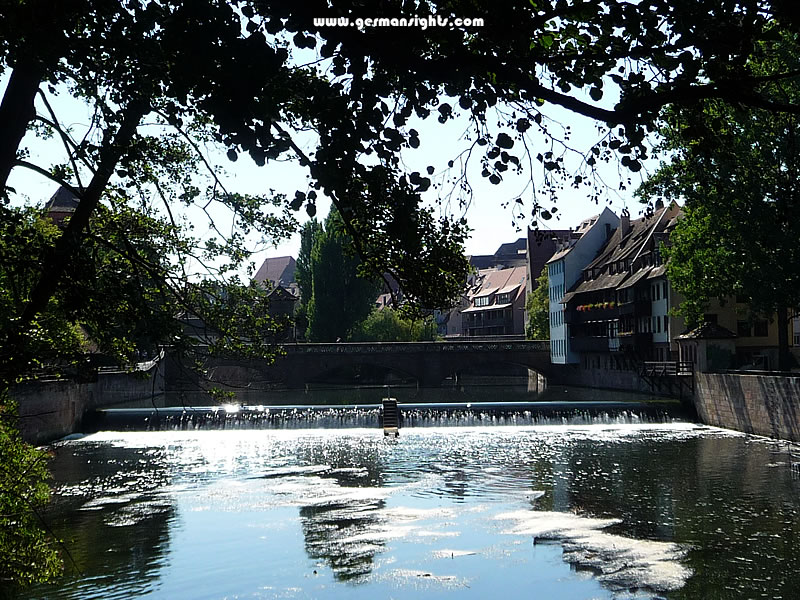
The Pegnitz is the river which flows through the Nuremberg old town centre and is crossed by some of the historic bridges. It continues down towards Fürth, where it becomes the Regnitz and heads further past Erlangen towards Bamberg, where it joins the Main. In the Middle Ages it was an important food and power source. One of the popular locations in the centre is the small river island known as the Trödelmarkt, with its bars, cafes and restaurants.
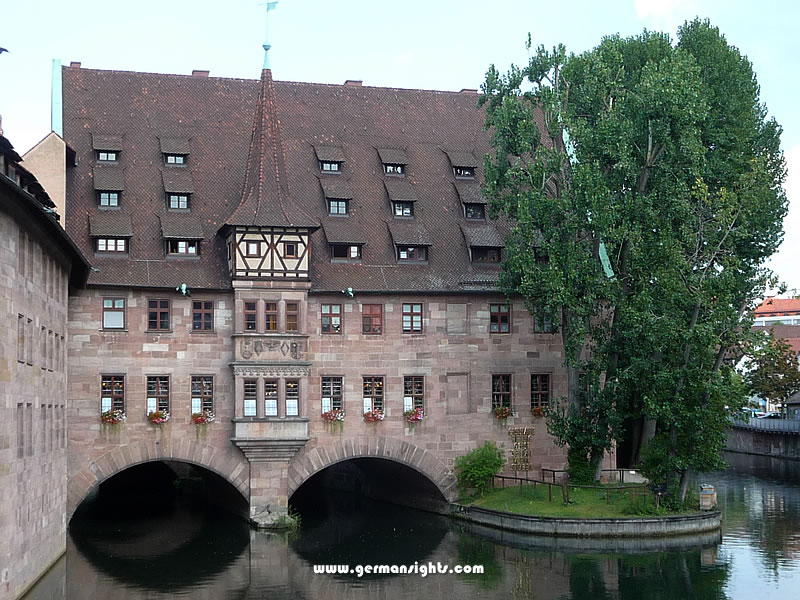
The Heilig-Geist-Spital is a charitable institution that can date its origins back to the 14th century. It was originally endowed by a merchant to provide accommodation for the poor and needy on the condition that they said daily prayers for his soul. The arches over the waters of the Pegnitz were a later addition in the 16th century. Part of the building still houses a care home and the charity is the richest in Nuremberg.
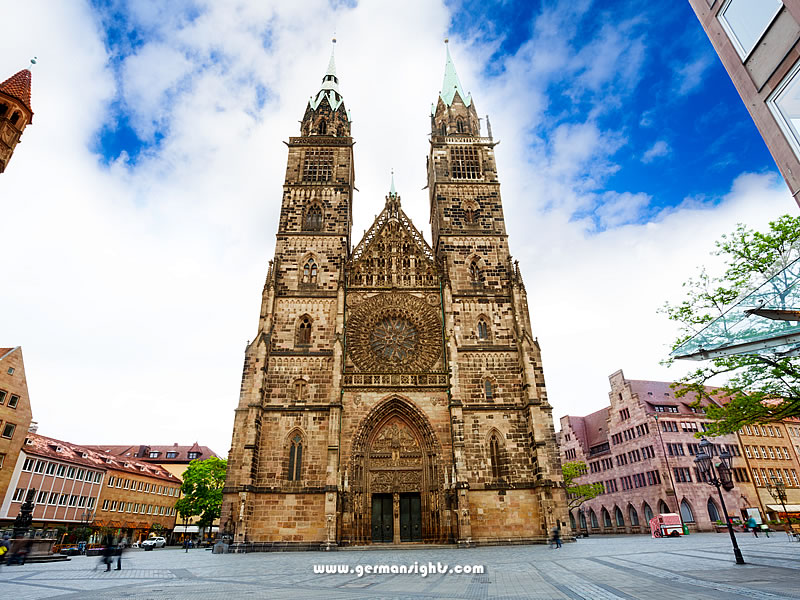
The Lorenzkirche (Church of St Lawrence) gives its name to Nuremberg's centre on the southern side of the Pegnitz - the Lorenzer Altstadt. It is one of the two major Protestant churches - one on either side of the river - and was one of the first churches to switch to the Lutherans in the time of the Reformation. Construction work started in the 13th century on the site of an earlier church and it was consecrated in the 14th century. It was badly damaged in the Second World War but reconstructed in 1949. One of the Nuremberg underground train stations in the old town bears the name 'Lorenzkirche' - the entrance is on the other side of the street in a shopping complex.
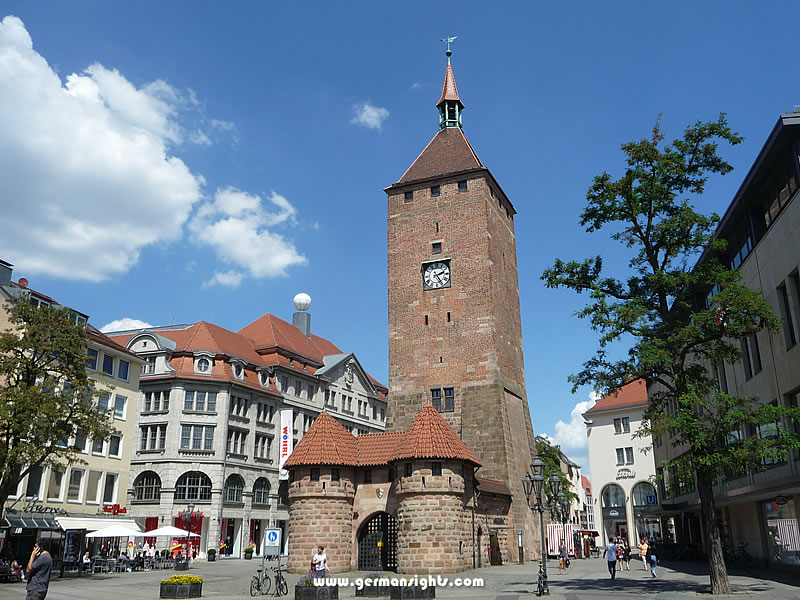
The Weisser Turm ('White Tower') was originally part of the fortifications around Nuremberg's old town. It was apparently originally covered in white plaster and dates back to the 13th century when it was constructed of sandstone. Nowadays it marks the entrance to the pedestrian area and the location of a popular underground train station, whose entrance is underneath the tower.
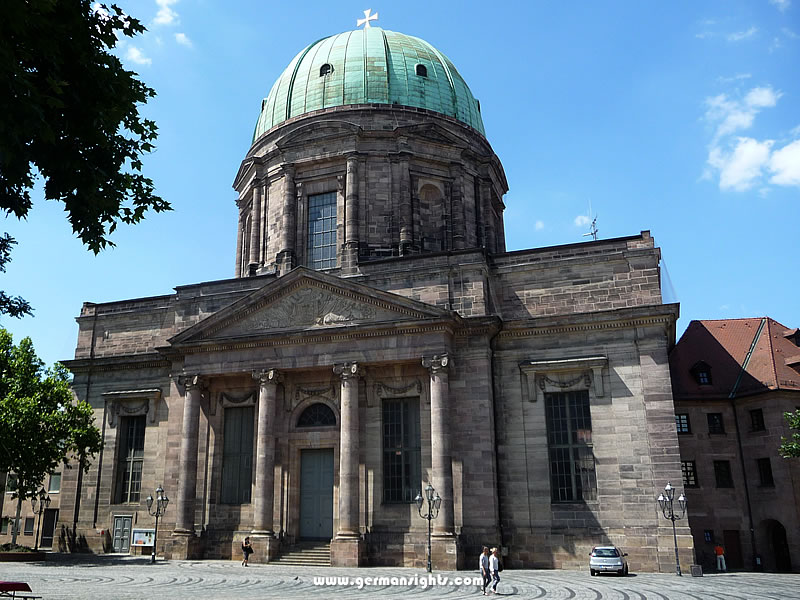
The Church of St Elizabeth is a Catholic church on the other side of the road from the White Tower and on the other side of a wide square from the Protestant Church of St Joseph. It stands on the site of an original church dedicated to St Elizabeth of Hungary founded by the Teutonic Order. It was once the only Catholic church in city grounds (the Frauenkirche was an Imperial church) and the building work for the present structure started in the 18th century when the former church proved too small for the congregation. Financial and political problems dogged the construction and the classical-style building was finally finished in the early 20th century.
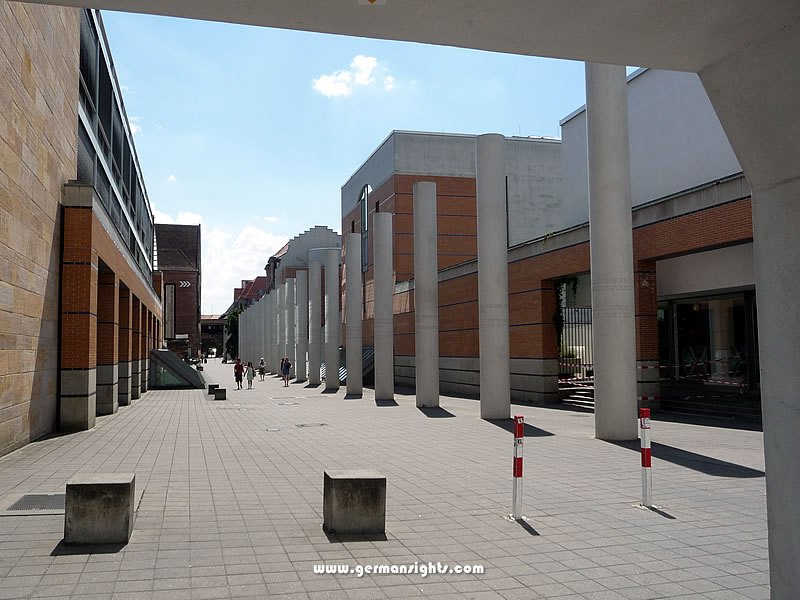
The Street of Human Rights is part of the efforts by Nuremberg to associate the city with human rights and reject the past associations with Nazi Germany and the history of the 1930s and 1940s. The 29 concrete columns and one oak tree stand at one of the entrances to the German National Museum - the columns each have the UN Articles of Human Rights in a different language carved into them. The street was dedicated in 1993 and two years later the city awarded the first International Human Rights Award as a response to and rejection of the Nazi Race Laws which had been announced 60 years before.